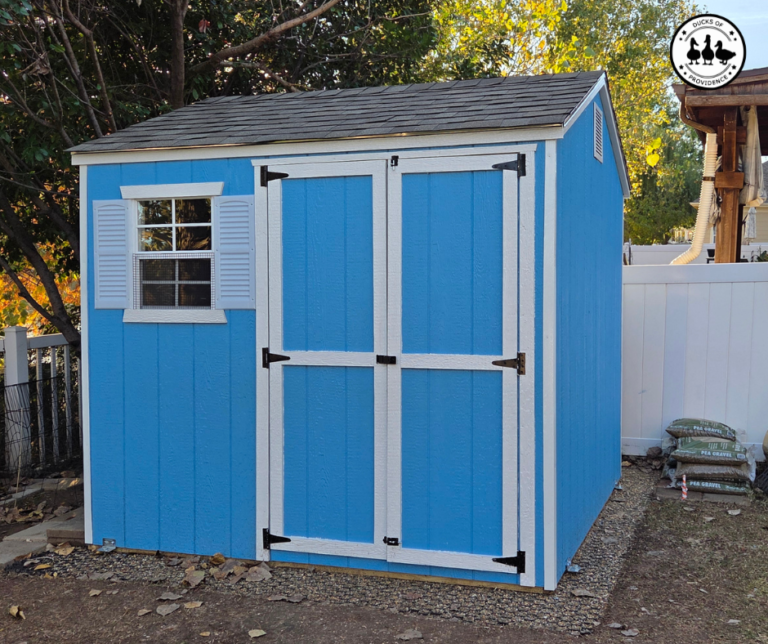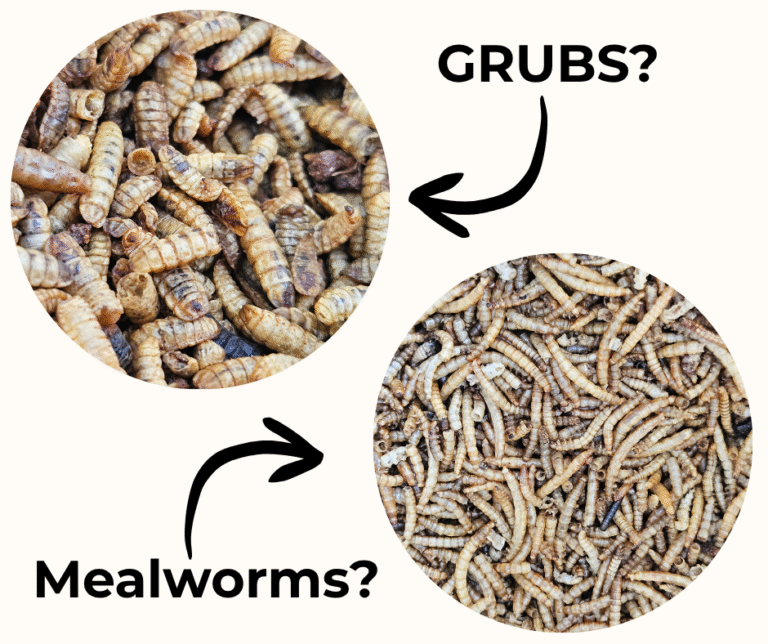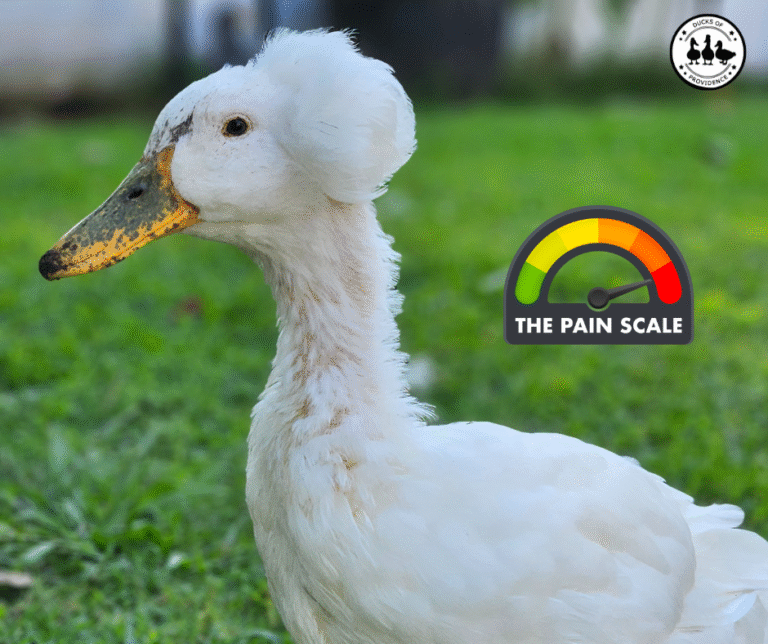
Pekin Ducks: The Classic Backyard Companion
If you picture a duck, chances are you’re imagining a Pekin. With their bright white feathers, cheerful waddles, and orange bills, Pekin ducks have become the quintessential image of domestic ducks. But behind their charming appearance lies a complex history and a few important health considerations every duck keeper should know—especially when it comes to weight.
Ducks of Providence is free, thanks to reader support! Ads and affiliate links help us cover costs—if you shop through our links, we may earn a small commission at no extra cost to you. Thanks for helping keep our content free and our ducks happy! 🦆 Learn more
A Quick History of the Pekin Duck
The Pekin duck has a long and fascinating history that stretches back more than 2,000 years to ancient China, where it was selectively bred from mallard ancestors for size, temperament, and meat quality. These ducks were highly valued in Chinese agriculture and cuisine, with centuries of careful breeding behind their development.
In 1873, a man named James E. Palmer brought a small flock of Pekins from China to New York. Of the original nine ducks, six survived the journey. From these few birds, the American Pekin breed was established. Over time, U.S. breeders focused on traits like faster growth, white plumage, and meat yield, leading to the development of the American Pekin we know today.
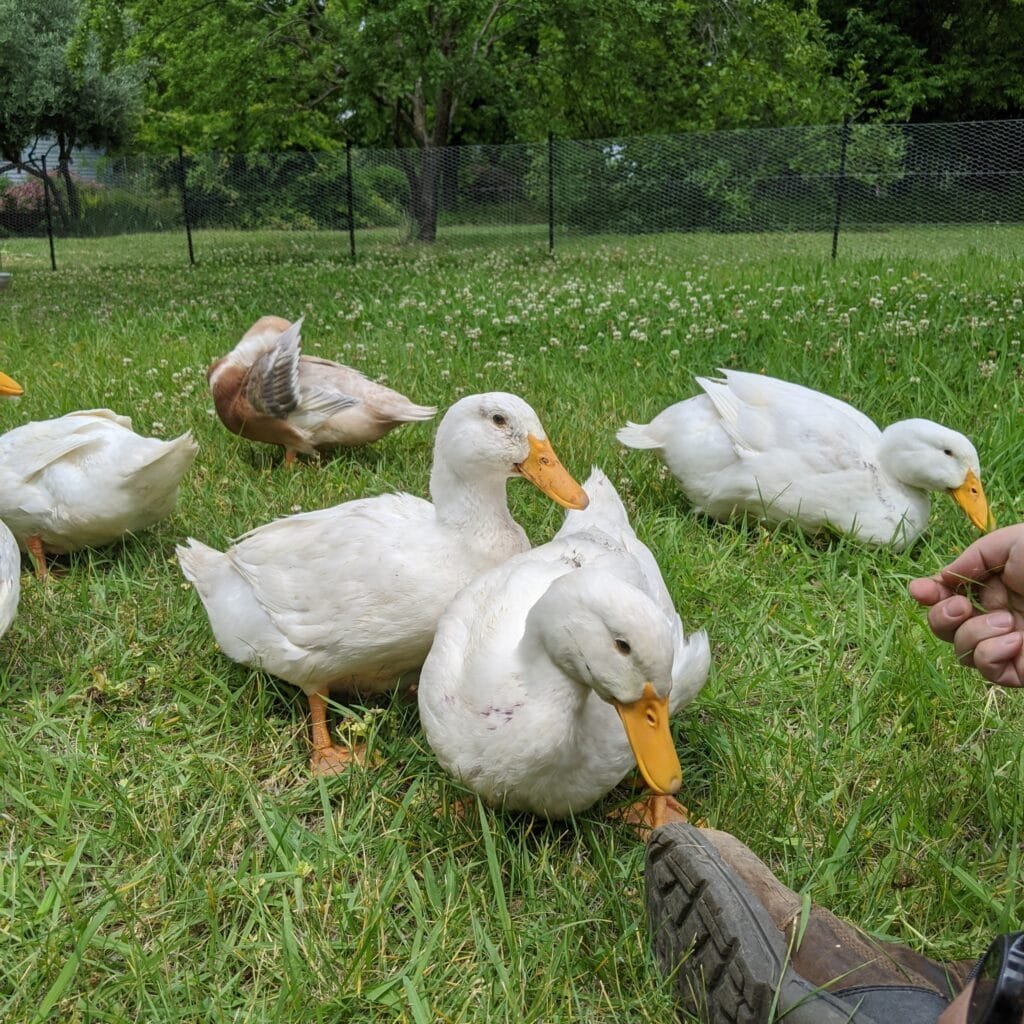
A specialized strain called the Jumbo Pekin emerged later through further selective breeding. This variety is commonly used in commercial meat production because of its rapid weight gain and large size. However, the same traits that make Jumbo Pekins valuable in agriculture can also create serious health challenges when they are kept as pets—a topic we’ll explore in more detail below.
Breed Highlights: Pekin Duck
| Trait | Details |
|---|---|
| Species | Anas platyrhynchos domesticus |
| Origin | Ancient China; imported to U.S. in 1873 |
| Standard Weight | 8–9 lbs |
| Jumbo Weight | 10–13+ lbs (some over 14 lbs) |
| Feather Color | White |
| Bill & Leg Color | Orange |
| Temperament | Docile, friendly, easy to handle |
| Egg Production | 150–200 large white eggs/year |
| Broodiness | Rare |
| Flight | Flightless |
| Lifespan | 5–12 years with proper care |
Pekins are often confused with other white breeds like White Layers or even Muscovy crosses, but their broad build and rapid growth set them apart.
Personality and Behavior
Pekins are gentle giants. They are naturally calm, social, and people-oriented, making them ideal for first-time duck keepers or families. Many pet owners describe them as affectionate and curious, often greeting their humans with excited quacks and waddles. While not quite as trainable as some smaller breeds like Indian Runners, Pekins are intelligent and can learn routines and even respond to their names.
They tend to thrive in structured environments and enjoy following familiar patterns, such as going in and out of their coop or waddling to their favorite water source. Due to their size, however, Pekins are less agile than smaller breeds. You won’t see them flying or leaping onto ledges—but they will happily paddle in a kiddie pool or forage in the yard.
Their voices are moderate to loud, with females quacking and drakes making softer rasping sounds. Be mindful that female Pekins can be quite vocal, especially around feeding time!
Egg Production
Although not primarily bred for egg laying, Pekin ducks can still provide a steady supply of large white eggs. Most standard Pekins lay between 150 and 200 eggs per year, especially during the spring and summer months.
- Egg Color: White
- Egg Size: Large to extra-large
- Age at First Lay: Around 5–6 months
Their reproductive drive isn’t as intense as in purpose-bred laying breeds, so many Pekins will take breaks during the winter or molting periods. Additionally, broodiness is rare in this breed. While they may lay eggs consistently, they rarely sit on them or show strong maternal instincts.
This makes them a good option if you’re collecting eggs for food, but less ideal if you’re hoping for natural hatching without an incubator or surrogate broody duck.
Standard vs. Jumbo Pekin Ducks: What’s the Difference?
While both versions of the Pekin duck share the same charming appearance and friendly nature, there are some important differences to be aware of—especially when it comes to size, care needs, and health risks.
| Feature | Standard Pekin | Jumbo Pekin |
|---|---|---|
| Average Weight | 8–9 lbs | 10–13+ lbs (some exceed 14 lbs) |
| Growth Rate | Fast | Very fast (designed for meat production) |
| Purpose | Dual-purpose (eggs + backyard pet) | Primarily meat production |
| Mobility | Moderate | Limited (more prone to leg and foot issues) |
| Health Risks | Moderate | High (due to rapid growth and excessive weight) |
| Lifespan (with good care) | 8–12 years | 4–8 years (often shorter without careful management) |
| Feeding Needs | Standard maintenance or layer feed | May require strict diet control to avoid obesity |
| Activity Level | Active and curious | Often more sedentary |
| Suitability as Pets | Excellent | Possible, but requires extra care and monitoring |
Key Considerations:
- Jumbo Pekins are often too heavy to mate naturally, forage effectively, or even enjoy a kiddie pool without assistance. They may tire easily and need special accommodations to prevent injury.
- Standard Pekins are better suited for backyard flocks and pet environments. They’re still hefty ducks, but more agile and manageable.
- Both types are gentle, personable, and social, but Jumbo Pekins often need intervention from owners to stay healthy long-term.
Health Concerns: Weight and Mobility
One of the most important things to understand about Pekin ducks—especially Jumbo Pekins—is that their health is closely tied to their body weight. These ducks were bred for rapid growth and large size, which can take a toll on their joints, feet, and internal organs if not carefully managed. As pet duck keepers, it’s our responsibility to balance their charming chubbiness with the long-term health risks that come with it.
Common Weight-Related Issues
Bumblefoot
Heavy ducks are more prone to bumblefoot, a painful infection on the bottom of the foot caused by pressure sores or small injuries that become infected. Hard surfaces (like concrete or gravel), poor hygiene, or simply too much weight pressing on the footpads are all risk factors. Bumblefoot can become severe if untreated and may require veterinary care, antibiotics, or even surgery.
Arthritis and Joint Strain
Joint pain and inflammation are very common in older or overweight Pekins. Their knees and hips bear most of their mass, and over time, the cartilage can wear down—especially if the duck is not moving much or if it gained weight rapidly during growth. Jumbo Pekins are particularly vulnerable to this, often showing signs of stiffness, reluctance to walk, or a waddling gait that worsens with age.
We’ve written a comprehensive article on arthritis in ducks, including causes, symptoms, and management strategies. If your duck is starting to slow down or looks uncomfortable walking, be sure to check it out for a deeper understanding:
👉 Understanding Arthritis in Ducks: Signs, Treatment & Prevention
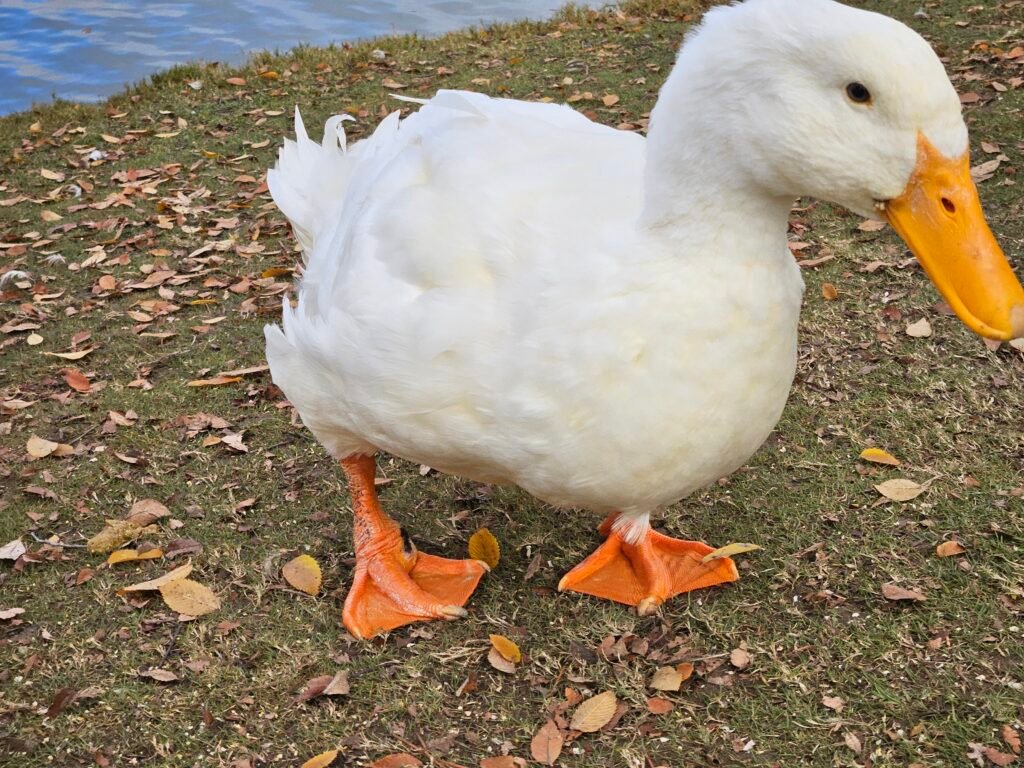
Respiratory and Cardiovascular Stress
Their large body mass means more demand on the heart and lungs. Obesity increases the risk of fatty liver disease, respiratory compromise, and general fatigue. Jumbo Pekins especially can overheat easily or seem out of breath after short bursts of activity.
Lethargy and Reduced Mobility
As they gain weight, many Pekins naturally move less—and the cycle continues. Lack of movement can also affect their digestive health and lead to boredom, which in ducks can turn into feather picking or stress behaviors. While they don’t need intense exercise, daily light movement is critical.
How to Support a Healthy Pekin Duck
Whether you’re raising a standard or Jumbo Pekin, there are several ways you can help reduce strain on their bodies and keep them healthy:
- Weight Monitoring: Weigh them regularly to catch early weight gain before it becomes a problem.
- Balanced Diet: Use a maintenance or layer feed designed for ducks, and avoid high-fat, high-carb treats like bread, corn, or too many mealworms.
- Encourage Movement: Give them space to waddle and explore, access to water for swimming (which is easy on their joints), and enrichment like treat balls or foraging trays.
- Soft Substrate: Use straw, pine shavings, or rubber stall mats to cushion their feet—especially in the coop or around water areas.
- Heat Management: Watch for signs of overheating, especially in summer. Pekins overheat faster than other breeds because of their body size and dense feathers. Always provide shade and cool water.
- Vet Care and Supplements: Older Pekins or those showing joint stiffness may benefit from joint-support supplements (like glucosamine or omega-3s). In more severe cases, anti-inflammatory medications prescribed by an avian vet can greatly improve comfort and mobility.
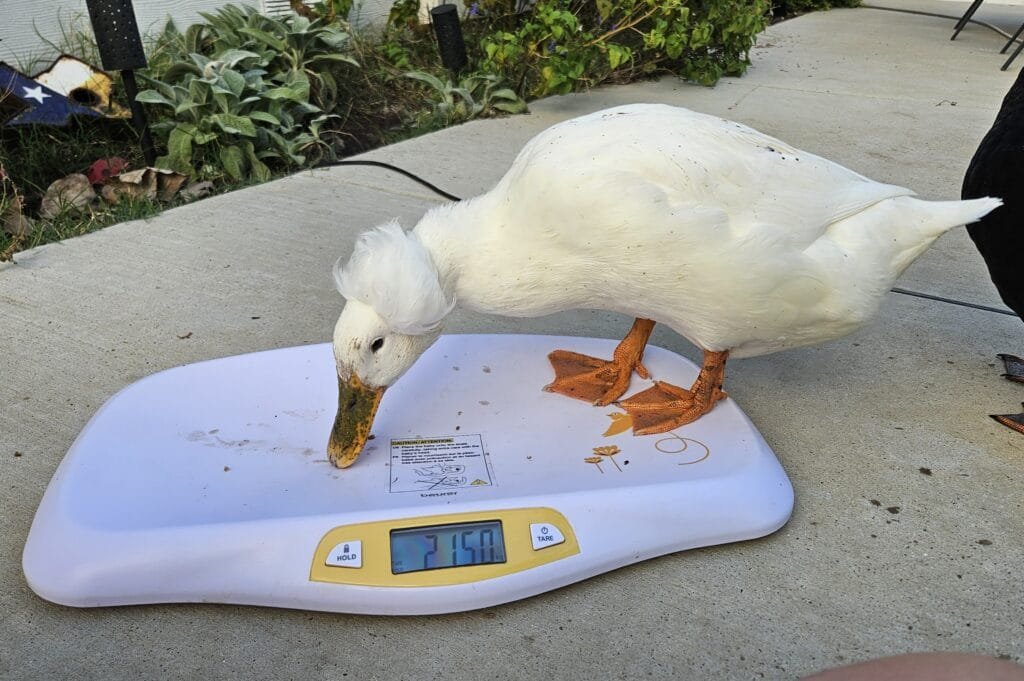
Nutritional Needs: The Role of Niacin
One often overlooked—but incredibly important—aspect of Pekin duck health is their need for niacin (vitamin B3) during their rapid growth phase. Niacin is essential for healthy development of bones, joints, and the nervous system. Deficiencies can lead to serious, sometimes irreversible leg problems.
Pekin ducklings grow exceptionally fast, putting extra stress on their legs and joints. Without adequate niacin in their diet during the first 8–10 weeks, they are at high risk of developing:
- Bow-legged stance
- Knuckling under
- Lameness
- Splayed legs
- Stunted growth or failure to thrive
Because standard chick feed is often too low in niacin for waterfowl, it’s crucial to use a duck-specific starter feed or supplement with brewer’s yeast or a niacin additive.
Tips for Preventing Niacin Deficiency:
- Feed ducklings a starter feed formulated for ducks, or one specifically labeled for waterfowl.
- If using chick starter, add a niacin supplement (like brewer’s yeast or liquid B3) at around 100–150 mg per gallon of water.
- Watch for early signs of weakness in the legs and adjust the diet immediately if needed.
- Continue niacin supplementation through the first 8–10 weeks of life, or longer for Jumbo Pekins.
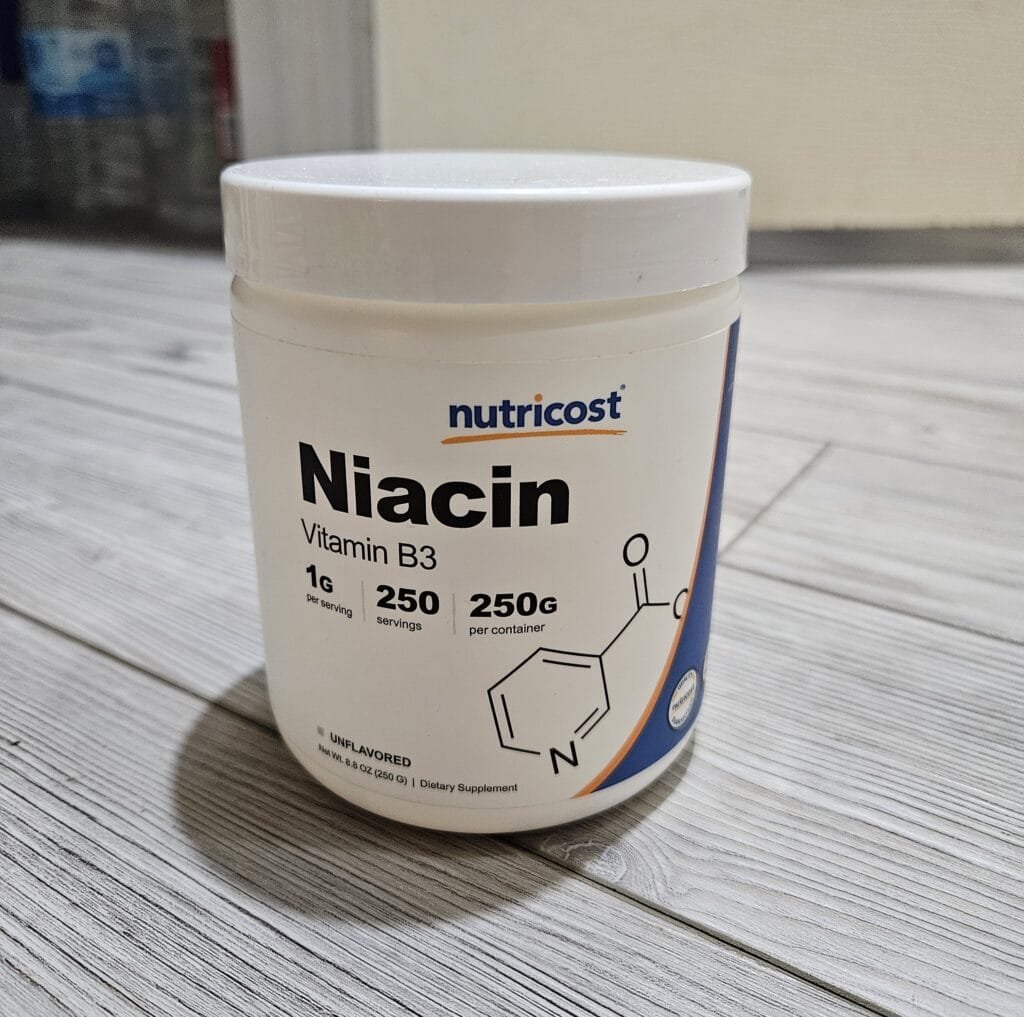
We’ve seen firsthand how proper niacin support can make the difference between strong, healthy legs and a duck that struggles to walk. It’s one of the most preventable causes of leg issues, especially in breeds like Pekins that are genetically predisposed to joint problems due to their size.
Lifespan Considerations
While standard Pekins can live 8–12 years with proper care, Jumbo Pekins often have a shorter lifespan—sometimes as little as 4–6 years—if their weight isn’t well managed. However, many duck keepers (like us!) have found ways to help Jumbo Pekins thrive as pets, with careful attention to diet, housing, and daily care routines.
Special Considerations for Pet Owners
While Pekin ducks are often associated with commercial meat production, they can also make wonderful and affectionate pets—if their unique needs are met. Their friendly personalities and fluffy white appearance make them irresistible, but they require more maintenance and attention than smaller, more agile duck breeds.
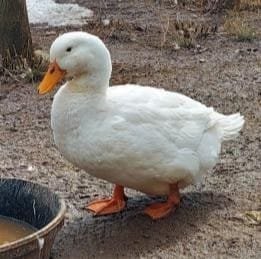
Here’s what every pet owner should consider before bringing a Pekin—especially a Jumbo Pekin—into the backyard flock.
Housing & Space Needs
Pekins are large ducks, and their housing should reflect that. Narrow doorways, steep ramps, or small nesting areas can make it difficult for them to move around safely.
Housing tips for Pekins:
- Use wider doors and low-entry thresholds so they can waddle in and out without getting stuck or injured.
- Avoid steep or slick ramps. Instead, provide low-incline ramps with traction (like rubber treads or horizontal slats) to reduce slipping.
- Keep the flooring soft and clean. Use straw, pine shavings, or rubber stall mats to cushion their joints and help prevent bumblefoot.
- Jumbo Pekins, in particular, may need larger turning space inside the coop or night pen to avoid bumping into walls or other ducks.
Since these ducks don’t fly, fencing only needs to be about 3 feet high—but it should be secure to protect from predators, especially because their large size makes them less able to escape or hide.
Feeding & Nutrition
As discussed earlier, diet is one of the most important factors in keeping a Pekin healthy long-term. Overfeeding, free-choice corn or mealworms, and lack of exercise can quickly lead to obesity.
Feeding tips:
- Stick to a waterfowl-formulated maintenance feed with a low protein content like Mazuri Waterfowl Diet, once they’re full grown.
- Offer leafy greens (like lettuce, kale, and dandelion), chopped vegetables, and foraging enrichment.
- Avoid high-calorie snacks like cracked corn, bread, or large amounts of grains unless they’re part of a controlled winter diet.
- Offer food in shallow water pans or near water sources to mimic natural dabbling and reduce choking risk—a method we use regularly with our own flock.

Water Access & Enrichment
Pekins love water, but due to their size, they need easy and safe access to it.
Key water considerations:
- Use shallow, wide pools or troughs they can walk into without needing to jump. Kiddie pools or dog swimming pools with low sides are ideal.
- For very heavy ducks, you may need to add stepping pavers or ramps to help them climb in and out safely.
- Clean water regularly to prevent bacterial growth, which can cause infections—especially in overweight ducks with limited mobility.
Because of their sedentary tendencies, enrichment is important. Rotate treats, rearrange foraging trays, and offer supervised free-range time to keep them mentally and physically active.
Heat Sensitivity
Pekins are more prone to heat stress and overheating than smaller or more agile ducks. Their large body mass and thick feathering act like insulation, which is great in winter—but a concern in summer.
To help your Pekins stay cool:
- Always provide ample shade and fresh drinking water.
- Offer shallow water to stand or sit in during hot weather.
- Use frozen treats (like peas in ice cubes) or place frozen water bottles in their pool.
- Avoid heavy activity or stressful events (like transportation) during the hottest parts of the day.
- Watch for panting, holding wings away from the body, or lethargy, which are signs of overheating.
Vet Access & Preventive Care
Pekins may need more veterinary care over their lifetime compared to lighter breeds—especially for foot injuries, reproductive issues in females, and arthritis in older or heavier ducks.
Important vet-related tips:
- Find an avian vet or waterfowl-experienced veterinarian before you need one. Not all vets treat ducks.
- Keep a first aid kit with foot care supplies, anti-inflammatory salves, and electrolytes.
- Monitor your duck’s gait regularly. Limping, stiff walking, or reluctance to stand can all indicate deeper joint or foot problems.
- Consider joint-support supplements like glucosamine or omega-3s as they age (we’ve had success using these with some of our older Pekins).
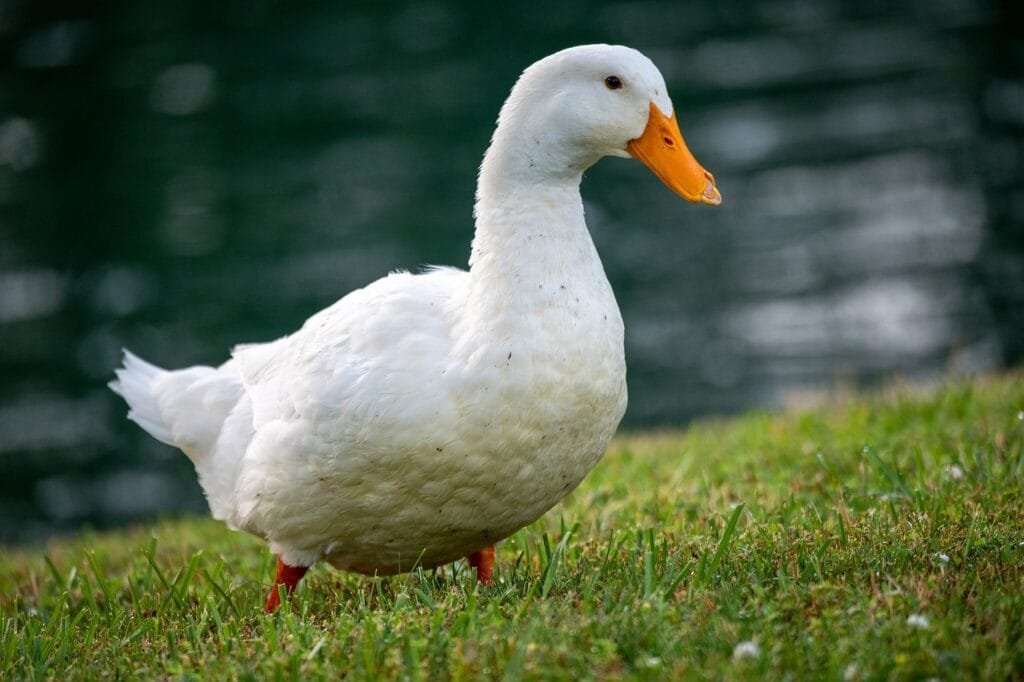
Emotional Needs & Bonding
Pekins are very social, both with other ducks and with humans. They tend to form strong bonds with their flock mates, and some become extremely attached to their caregivers.
Bonding tips:
- Spend time with your ducks daily. Even 10–15 minutes of gentle interaction helps build trust.
- Speak in a calm voice—they recognize tones and may respond to your presence or name.
- Never keep a single Pekin duck. They are not solitary animals and can become depressed or anxious without companionship.
We’ve found that even our more aloof Pekins warm up over time. With patience, gentle handling, and consistent routines, many Pekins become affectionate and calm around people.
Pekin Duck vs. Peking Duck: Clearing Up the Confusion
At first glance, “Pekin duck” and “Peking duck” sound like they might be the same thing—but they’re not. This mix-up is one of the most common misunderstandings among new duck owners or those encountering duck terminology for the first time. Let’s clear it up.
🦆 Pekin Duck (the Breed)
- What it is: A domestic duck breed, originally from China and now widely kept in the U.S. and other countries for both meat and eggs.
- Spelling: “Pekin” refers to the breed.
- Use: Popular in backyard flocks and small farms, but also commonly raised commercially for meat.
- Traits: White plumage, orange bills and legs, calm personality, heavy body.
We’ve discussed Pekin ducks in-depth throughout this post—whether you’re keeping them as pets or raising them for eggs, they’re friendly, hardy, and easy to care for with the right setup.
🍽️ Peking Duck (the Dish)
- What it is: A famous Chinese dish, not a duck breed.
- Spelling: “Peking” refers to the historic English name for Beijing, where the dish originated.
- Use: A traditional roast duck dish, known for its crispy skin and rich flavor. It’s a culinary technique, not a type of duck.
- Preparation: Peking duck is air-dried, seasoned, and roasted, often served with pancakes, scallions, and hoisin sauce.
Are Pekin Ducks Used in Peking Duck?
Yes—sometimes. The breed used for the dish can vary depending on the region, but Pekin ducks are a common choice due to their size and tender meat. However, other breeds native to China may be used as well, especially in traditional preparations.
Are Pekins the Right Duck for You?
Pekins are perfect for those who:
- Want a calm, friendly duck
- Are looking for a low-flight, backyard breed
- Can manage their diet and monitor their health
- Don’t mind a bit of extra cleaning (they are enthusiastic splashers and prolific poopers!)
However, they may not be the best fit if you’re hoping for a highly active or foraging-heavy flock, or if you aren’t able to provide the additional attention Jumbo Pekins require.
Final Thoughts
Pekin ducks may be one of the most recognizable and widely kept domestic duck breeds, but they’re so much more than their snowy white feathers and cheerful waddles. Whether you’re drawn to their calm temperament, their steady egg production, or simply their presence in your backyard, Pekins can make incredibly rewarding companions. Just remember—they thrive best with attentive care, a balanced diet, and thoughtful accommodations that support their size and mobility.
With the right setup and a little daily love, even a Jumbo Pekin can live a happy, healthy life as part of your flock. And if you’re anything like us, it won’t take long for your Pekin to steal your heart—waddle by waddle.
Other Duck Breeds
- Cayuga Ducks: The Beautiful Black Duck Breed
- Ancona Duck – A Rare Duck Breed
- Muscovy Ducks: The Gentle Giants of the Duck World
- Welsh Harlequin Duck – Friendly, Hardy, and Stunningly Unique
- Khaki Campbell: The Champion Egg Layer That Can (Almost) Fly
- Crested Ducks: Pets with a Genetic Defect
- Indian Runner Ducks: The Upright, Active, and Entertaining Breed

